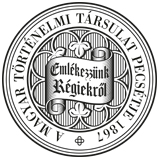Századok – 2001
TANULMÁNYOK - Hegyi Klára: Magyar és balkáni katonaparasztok a budai vilajet déli szandzsákjaiban VI/1255
KATONAPARASZTOK A BUDAI VILAJET DÉLI SZANDZSÁKJAIBAN 1311 Klára Hegyi MILITAIRES PAYSANS HONGROIS ET D'ORIGINES BALKANIQUES DANS LES SANJAKS MÉRIDIONAUX DU VILAYET DE BUDA (Résumé) Des structures des militaires paysans (yaya, miisellem, yüriik, derbendci, doganci, voynuk, martolos, vlach) que les Ottomans, d'une part, ont héritées aux Balkans, d'autre part ont établies, quelques-unes se sont manifestées en Hongrie au XVIe siècle. Premièrement des miisellems ont été établis dans les villages du sanjak de Pécs (en turc : Peçuy) habité exclusivement des Hongrois, auX frontières occidentales du territoire ottoman. Ils furent libérés du payment de l'impôt et chargés de participer en personne, en tant que chevalerie aux campagnes locales et du sultan. L'organisation des miisellems, construite sur la population hongroise, étrangère de la région, s'est démolie en deux décennies. Elle pouvait s'enraciner seulement aux territoires où un grand nombre des peuples balkaniques, slaves méridionales et vlachs se fixait avec leurs chefs (kenez, primikur) dans les régions désertées lors des guerres. L'organisation des miisellems-paysans, ainsi que celle des martolos habitant les villages a été établie dans le sanjak de Szeged (en turc : Segedin), partie méridionale de la région entre le Danube et la Tisza. En plus, quatres villages désertés furent peuplés des miisellems libérés des impôts, nommés des haramis dans l'ordonnance du sultan, en vue de garder les axes au long du Danube et de la Tisza. Les deux organisations ont perdu d'importance aux années 1570 : le résidu des militaires paysans fut rassambler à défendre les forteresses ottomanes. Dans les années 1570-1580 une masse du peuple mixte balkanique, nommé vlach, se fixa dans les sanjaks de Koppány (en turc : Κοραή) et de Simontornya (en turc : Aimontorna) qui ne payait plus de florins d'or (filorici), mais un impôt forfaitaire (les taxes d'état et seigneuriales faisaient 160-170 akçe). Cette population ne passait plus son obligeance militaire conformément aux coutumes vlachs, en se remplaçant, mais des miisellems furent établis d'elle. S'il y en avait besoin, ils entrèrent dans le corps des mercenaires des forteresses de la région. HUNGARIAN AND BALKAN SOLDIER-PEASANTS IN THE SOUTHERN SANJAKS OF THE VILAYET OF BUDA by Klára Hegy (Summary) Among the organisations of peasant-soldiers partly found, partly established by the Ottomans on the Balkans (yaya, miisellem, yüriik, derbendci, doganci, voynuk, martolos, vlach), some appeared in Hungary as well in the middle of the 16th century Müsellem, who were exempted from taxation and were required to serve as cavalrymen in both the sultan's campaigns and the local wars, were first established in the villages of the sanjak of Pécs, a territory of exclusively Hungarian population on the western fringes of Ottoman domination. The müsellem organisation, based on the local Hungarian population, was completely alien to the region, and consequently vanished within two decades. It became deeply rooted only on those territories where the place of the Hungarians, diminished by constant warfare, was taken by Southern-Slavs and Vlachs. On the southern marches of the area between the Danube and the Tisza, whose population had been entirely changed, organisations of both peasant -müsellem and rural martolos were set up. Moreover, in order to guard the roads running along the Danube and the Tisza four deserted villages were populated by exempted müsellem, who were referred to by the sultan's edict as harami. But by the 1570s both organisations diminished, and the remaining peasant-soldiers were relocated for the defense of the Ottoman castles. In the 1570s and 1580s a great number of mixed Balkan population, called Vlachs, settled south of the lake Balaton, in the sanjaks of Koppány and Simontornya. But these people no more paid in golden florins but a presumptive tax (their central and seigneurial tax amounted to 160-170 akce). This population did not serve according to the Vlach custom on a rotational basis, but furnished müsellem as well. And, in case of necessity, they engaged themselves in great numbers as mercenaries in the neighbouring castles.
